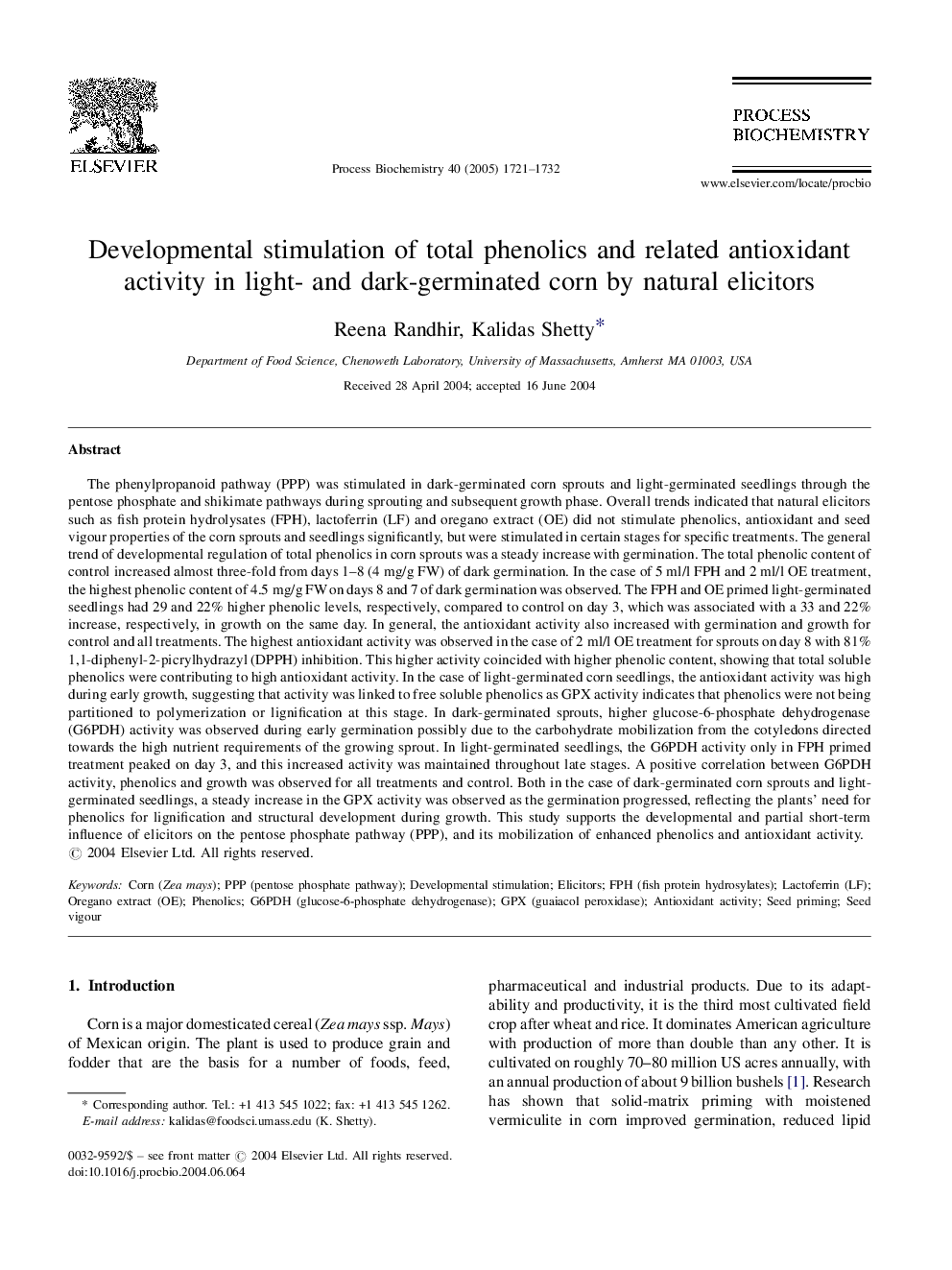| Article ID | Journal | Published Year | Pages | File Type |
|---|---|---|---|---|
| 10236399 | Process Biochemistry | 2005 | 12 Pages |
Abstract
The phenylpropanoid pathway (PPP) was stimulated in dark-germinated corn sprouts and light-germinated seedlings through the pentose phosphate and shikimate pathways during sprouting and subsequent growth phase. Overall trends indicated that natural elicitors such as fish protein hydrolysates (FPH), lactoferrin (LF) and oregano extract (OE) did not stimulate phenolics, antioxidant and seed vigour properties of the corn sprouts and seedlings significantly, but were stimulated in certain stages for specific treatments. The general trend of developmental regulation of total phenolics in corn sprouts was a steady increase with germination. The total phenolic content of control increased almost three-fold from days 1-8 (4Â mg/g FW) of dark germination. In the case of 5Â ml/l FPH and 2Â ml/l OE treatment, the highest phenolic content of 4.5Â mg/g FW on days 8 and 7 of dark germination was observed. The FPH and OE primed light-germinated seedlings had 29 and 22% higher phenolic levels, respectively, compared to control on day 3, which was associated with a 33 and 22% increase, respectively, in growth on the same day. In general, the antioxidant activity also increased with germination and growth for control and all treatments. The highest antioxidant activity was observed in the case of 2Â ml/l OE treatment for sprouts on day 8 with 81% 1,1-diphenyl-2-picrylhydrazyl (DPPH) inhibition. This higher activity coincided with higher phenolic content, showing that total soluble phenolics were contributing to high antioxidant activity. In the case of light-germinated corn seedlings, the antioxidant activity was high during early growth, suggesting that activity was linked to free soluble phenolics as GPX activity indicates that phenolics were not being partitioned to polymerization or lignification at this stage. In dark-germinated sprouts, higher glucose-6-phosphate dehydrogenase (G6PDH) activity was observed during early germination possibly due to the carbohydrate mobilization from the cotyledons directed towards the high nutrient requirements of the growing sprout. In light-germinated seedlings, the G6PDH activity only in FPH primed treatment peaked on day 3, and this increased activity was maintained throughout late stages. A positive correlation between G6PDH activity, phenolics and growth was observed for all treatments and control. Both in the case of dark-germinated corn sprouts and light-germinated seedlings, a steady increase in the GPX activity was observed as the germination progressed, reflecting the plants' need for phenolics for lignification and structural development during growth. This study supports the developmental and partial short-term influence of elicitors on the pentose phosphate pathway (PPP), and its mobilization of enhanced phenolics and antioxidant activity.
Keywords
Related Topics
Physical Sciences and Engineering
Chemical Engineering
Bioengineering
Authors
Reena Randhir, Kalidas Shetty,
